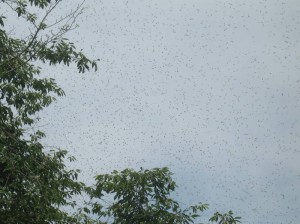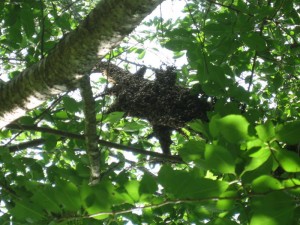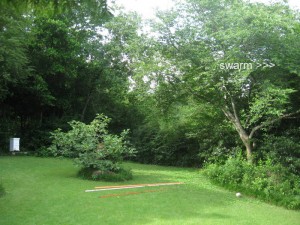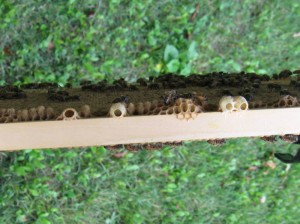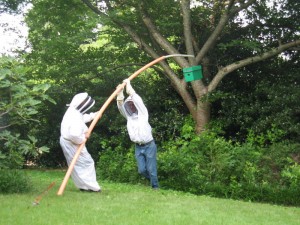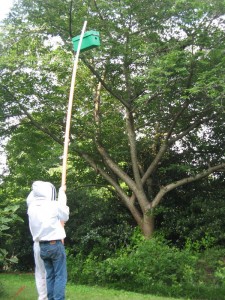“A new colony start in the spring is not likely to swarm during that first season. A novice beekeeper should not be overly concerned about swarming …” Beekeeping – A Practical Guide, by Richard E. Bonney.
“There certainly are a lot of bees out in the yard,” my wife remarked on Sunday afternoon. I put on my bee jacket and went out to take a look. It was a veritable tornado of bees up in the sky.
The cloud of bees seemed to be moving toward a nearby tree in our yard. Sure enough, within a few minutes, the swarm had coalesced onto a branch high in the tree.
It is certainly possible to collect a swarm and install it into another hive, but this swarm is just too high for an easy retrieval – about 25 feet, on a branch too big to easily cut. My mentor suggests we set up a bait hive to lure the swarm into a box.
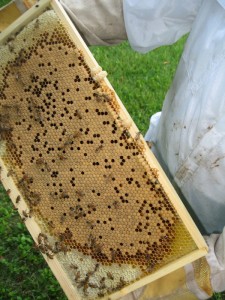
A brood frame makes a good lure for a swarm, but not this one – it has queen cells, which are needed by the original hive to generate a new queen.
Some of the frames in the hive have queen cells, which are much larger than worker or drone cells. There are larvae evident inside. These cells were constructed well before the swarm left. Both queen larvae and worker larvae are fed royal jelly initially, but larvae continued on this diet past the first few days will develop into queens. It will take a little more than a week after the swarm leaves for this hive to produce a new queen.
Like I said, it’s way up there.

